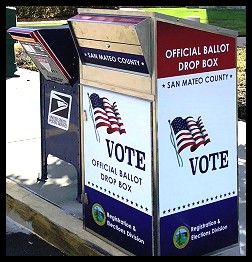 This will not be easy. It never is. But, this year, we are facing obstacles to voting that we have never seen before. Not only from the unprecedented COVID-19 crisis, which is already difficult enough, but from those who hope to exploit the pandemic along with their access to the levers of power to make voting --- by some --- as difficult as possible. It is now up to all of us to overcome those obstacles.
This will not be easy. It never is. But, this year, we are facing obstacles to voting that we have never seen before. Not only from the unprecedented COVID-19 crisis, which is already difficult enough, but from those who hope to exploit the pandemic along with their access to the levers of power to make voting --- by some --- as difficult as possible. It is now up to all of us to overcome those obstacles.
President Trump is, by no means, the first right-wing Republican to recognize that he can't win if voters turn out in large numbers.
"I don't want everybody to vote," Paul Weyrich, the GOP's notorious godfather of right-wing voter suppression infamously quipped during a 1980 address to a group of evangelical Christian ministers. "In fact, our leverage in the elections goes up as the voting populace goes down," he added, after denigrating those who seek "good government" through maximum, informed voter participation, as people who suffer from "goo goo syndrome".
(The soaring pandemic death toll and an unprecedented 32.9% annualized second quarterly plunge in the GDP, serve as testament to what happens when We the People allow those opposed to "good government" to be placed in charge of our political economy.)
Trump's repeated attempts to suppress voter turnout are by no means novel --- as amply demonstrated during our two-part coverage (here and here) of the 2011 U.S. Senate hearings concerning a spike in GOP-engineered, state voter suppression laws. During those hearings nearly a decade ago, civil rights litigator Judith Browne Dianis described that spike as "the largest legislative effort to roll back voting rights since the post-Reconstruction era."
What makes our current circumstance both novel and extraordinarily dangerous is that an authoritarian-wannabe Donald Trump is the first Republican President who has been positioned to weaponize a pandemic by forcing voters to choose between exercising their fundamental right to vote and the risk of contracting a deadly virus. Instead of simply relying upon state voter suppression laws, Trump has aspired to engage in wholesale suppression on a national scale. Operating through a major GOP/Trump donor-turned-Postmaster General Louis DeJoy, Trump seeks to actively sabotage the social distancing protection that Vote-by-Mail (VBM) affords by creating delays in U.S. Postal Service (USPS) deliveries.
Last Friday, during a must-listen-to segment of The BradCast, Mark Dimondstein, President of the American Postal Workers Union (APWU), confirmed that mail slow-downs were "happening across the country" at a time in which the USPS was already in "crisis mode" as a result of the dangers posed by COVID-19. In his view, the Post Office is now at the "epicenter" of the 2020 battle over "voting rights", noting that "without Vote-by-Mail people aren't going to be able to vote."
Thus, in addition to fending off "dubious" Republican legal challenges to mail-in voting expansion, democracy's defenders --- which, in this case, includes We the People --- must now double our own efforts to navigate Trump's sabotage of mail delivery. This, at a time when election officials in states that have not previously engaged in near-universal VBM must upgrade their electoral infrastructure in order to accommodate and tabulate an unprecedented volume of hand-marked paper VBM ballots.
But there are proactive steps that jurisdictions --- and, yes, you! --- can take to maximize the odds that your ballot is tallied this year...
Learning from the experienced
 "Seven-in-ten adults favor allowing any voter" to cast a VBM ballot, according to Pew Research. That desire is shared by Colorado's Democratic Secretary of State Jenna Griswold, who, during a must-watch July 31 segment of MSNBC's Rachel Maddow Show, told guest-host Ali Velshi that she favors the enactment of VBM for all, "immediately."
"Seven-in-ten adults favor allowing any voter" to cast a VBM ballot, according to Pew Research. That desire is shared by Colorado's Democratic Secretary of State Jenna Griswold, who, during a must-watch July 31 segment of MSNBC's Rachel Maddow Show, told guest-host Ali Velshi that she favors the enactment of VBM for all, "immediately."
Griswold's enthusiastic support for universal VBM partially derives from her public safety concerns. "Unlike Donald Trump," she said, "I do not want to force Americans to risk their health to cast their ballot." She likened VBM to wearing a mask: "it saves lives." Her support is also driven by objective criteria reflecting that, since her state switched to all-VBM elections in 2014, democracy-enhancing voter participation has soared.
Of course, the task is relatively easy for election officials in the five states --- Colorado, Hawaii, Oregon, Washington and Utah --- that have previously conducted all-VBM elections. Those states may be more able to overcome Trump's mail slowdown via minor systemic tweaks, such as moving up the date when VBM ballots should be mailed to voters. But, to varying degrees, other state election officials face a more daunting challenge with respect to the infrastructure needed to timely collect, process and tally massive numbers of hand-marked VBM paper ballots.
During the last Presidential Election, for example, only 2% of Kentucky voters cast mail-in ballots, according to Pew. Yet VBM ballots accounted for 85% of all votes cast during this year's primary election in the Bluegrass State. The state's delay in counting those ballots after the election will almost certainly be exacerbated, according to local officials, with a far larger number of such ballots anticipated to be cast in the November general election. Each requires one-by-one manual authentication before it is electronically scanned and tallied.
For less experienced states, Velshi noted, citing an ABC News account, legislative and executive orders to expand VBM have created a rush "to line up the best vendors for printing and distributing [VBM] paper ballots." State and local election officials have been hard at work, amending VBM "ballot rules" and creating plans "to hire and train enough workers," Velshi reported.
One thing you can do today to help with this potential democracy-crushing quagmire is volunteer in your local jurisdiction to become a poll worker if you are healthy and young enough not to be in one of the groups most vulnerable to COVID-19. Poll worker shortages are already leading to the closure of many in-person polling places around the country and the processing of incoming VBM ballots will be a monumental task this year. Your cautious help --- wear masks, use hand sanitizers, social distance to the extent possible --- is greatly needed! And you make some money to boot!
As to handling the tens of millions of ballots that will be cast by mail, Velshi went on to assert that under-experienced election officials would do well to consult with their counterparts in states that previously converted to near universal mail-in voting. Griswold agreed. In fact, she reported that she has already been working with other Secretaries of State from across the nation. Of course, she added, "investments" must be made so that her counterparts can effectuate needed changes --- a not insignificant obstacle for states, whose financial resources have been consumed by the ravages of the COVID-19 pandemic.
Secretaries of State would also do well to review Oregon's Vote by Mail Procedures Manual [PDF], given that the Beaver State has amassed quite a bit of knowledge from experience, having been the first to switch to all VBM voting in 1996.
Expedited VBM distribution
 Like Connecticut, which is considering the elimination of its excuse requirement for the November election, most states are going through a multi-step VBM process that renders them more vulnerable to Trump's slowdown of USPS mail deliveries. State or county election officials in many such states are mailing absentee ballot request forms to registered voters. Voters who desire to vote by mail, send their completed absentee request form back to either a county or municipality's elections office or to the Office of the Secretary of State. In those states, the VBM ballot is mailed to voters only after election officials receive and process the completed absentee ballot request --- a process that places a premium on early voter submission of the request. In some states, as had previously been the case in California, a voter could ask to become permanent VBM voters to receive absentee ballots in all future elections.
Like Connecticut, which is considering the elimination of its excuse requirement for the November election, most states are going through a multi-step VBM process that renders them more vulnerable to Trump's slowdown of USPS mail deliveries. State or county election officials in many such states are mailing absentee ballot request forms to registered voters. Voters who desire to vote by mail, send their completed absentee request form back to either a county or municipality's elections office or to the Office of the Secretary of State. In those states, the VBM ballot is mailed to voters only after election officials receive and process the completed absentee ballot request --- a process that places a premium on early voter submission of the request. In some states, as had previously been the case in California, a voter could ask to become permanent VBM voters to receive absentee ballots in all future elections.
Many states allow VBM requests to be made online to help streamline this process, but no state should ever allow for the transmittal of voted ballots online, let alone engage in the insanity of Internet voting. As observed by Ronald L. Rivest, an MIT Professor of Electrical Engineering and Computer Science, "Secure Internet voting is a bit like the phrase 'safe cigarettes.'"
Recently, California joined with the other five all VBM states by eliminating the need for voters to first submit an absentee request form. Golden State election officials will now automatically mail VBM ballots to all active registered voters in advance of the November 3 election. (Should they so desire, California voters retain the option to eschew VBM and cast an in-person ballot.) Late, first-time registering voters, or those not considered to be "active" by the state, or those who have changed their address since the last time they voted without having changed their registration record with the state, may have to vote in-person, as they may not receive either a ballot or an absentee ballot request form by mail.
Now is the perfect time for voters to check their registrations to make sure they are up to date, with accurate addresses, or register to vote if you have not done so already. You can get information on how to do that in your state vis this helpful 2020 Voters Calendar website. It offers links for registering and updating records in each of the 50 states, along with deadlines for registration and the submission of VBM ballots in each.
During her appearance on The Rachel Maddow Show, Griswold told Velshi that Colorado mails VBM ballots to its voters about three weeks before an election. Given the Trump mail slowdown, Griswold would do well to consider moving up the date her state sends VBM ballots to voters to perhaps five weeks before the election.
Drop-boxes and tracking
 If widely utilized, two VBM innovations --- secure drop-boxes and ballot tracking --- offer convenient means by which citizens can evade Trump's insidious mail slowdown roadblock. Indeed, their value as an alternative to utilization of the USPS was recognized by Secretary Griswold even before the recently mandated mail slow down. About one week prior to each election, her office informs "Coloradans" to stop utilizing the the USPS because their VBM ballots must be received by Election Day. "That's why we have hundreds of mail ballot drop-boxes across the state," the CO Sec. of State explained to Velshi.
If widely utilized, two VBM innovations --- secure drop-boxes and ballot tracking --- offer convenient means by which citizens can evade Trump's insidious mail slowdown roadblock. Indeed, their value as an alternative to utilization of the USPS was recognized by Secretary Griswold even before the recently mandated mail slow down. About one week prior to each election, her office informs "Coloradans" to stop utilizing the the USPS because their VBM ballots must be received by Election Day. "That's why we have hundreds of mail ballot drop-boxes across the state," the CO Sec. of State explained to Velshi.
The American Postal Workers Union President, according to his Friday interview on The BradCast, advised similarly, noting that drop-boxes are available in some jurisdictions, and VBM ballots can also be dropped off in person at most election office headquarters.
In his Executive Order [PDF], authorizing all Connecticut voters to cast VBM ballots during that state's August 11 primary, Democratic Governor Ned Lamont observed that "secure and tamper-proof drop-boxes manufactured specifically for the purpose of voting, offer a safe and secure way for voters to deliver absentee ballots to election officials without in-person interactions that could increase the risk of transmission of COVID-19."
California's Democratic Secretary of State Alex Padilla has adopted a series of regulations that could serve as a model for the rest of the nation. These include a mandate that every one of the Golden State's 58 counties provide one or more VBM "drop-off locations" or secure "drop boxes". The regulations also provide detailed security procedures for the collection of VBM ballots deposited in drop-boxes and for maintaining a secure chain-of-custody for collected VBM ballots.
Pursuant to Padilla's regulations, VBM drop-off locations and drop-box hours are determined by county election officials. County officials must publicly announce the locations of drop-off locations and drop-boxes at least 30 days prior to the election. They must also notify the Secretary of State so the information can be published on the SoS website as well.
Based upon a July 31 email response from Rebecca Moak, a clerk at the Ventura County, CA Registrar's Office, it appears that the Golden State's enthusiasm for the utilization of secure drop-boxes is shared by local officials and voters alike. She tells us that, during California's March primary, the County's 10 drop-boxes "were heavily used" and that the County was looking to expand to a "total of 31 locations" for the November election. Those drop-off locations will be listed "in the County Voter Information Guides mailed out in late September and also located [on the County Registrars'] website."
California does afford some leeway for late-delivered VBM ballots processed by the USPS. So long as they are postmarked no later than Nov. 3, a VBM ballot will be processed if the ballot is received by elections officials on or before Nov. 20.
Like a number of other states, California also permits voters to personally deliver their VBM ballot to their local precinct on Election Day. (Check your local jurisdiction to make sure this option is available there!) Ordinarily, that would be the ideal means for assuring that local election officials receive a VBM ballot. However, during the upcoming Presidential Election, precinct drop-off could conflict with the need to maintain social distancing for some.
There is another means by which voters can verify that their VBM ballot was not only received but processed. "Colorado," Velshi noted, "implemented the first intelligent ballot-tracking program. Election officials use an intelligent mail barcode that is specific to the voter's envelope. It allows voters to track the ballot at every step of the process." California adopted the same VBM ballot tracking system via an Executive Order issued by Gov. Newsom, according to Padilla's website, which includes a link where voters can access "automatic updates on the status" of their mail-in ballots.
VBM processing, tabulation and risks
 As discussed in a recent paper [PDF] authored by several academics, including University of Florida Prof. Daniel A. Smith, VBM carries with it a risk that one's ballot will be rejected for reasons that do not exist for in-person voters.
As discussed in a recent paper [PDF] authored by several academics, including University of Florida Prof. Daniel A. Smith, VBM carries with it a risk that one's ballot will be rejected for reasons that do not exist for in-person voters.
In most states, a VBM ballot will not be processed or tallied unless the voter dated and signed their return envelope. Some states impose the added burden --- made even worse during the COVID pandemic --- of having to sign the ballot before a notary or two witnesses.
Smith et al are critical of disturbingly high absentee ballot rejection rates based on a possible lack of match between ballot envelope signatures and those that appear on a voter's registration form, many of which may have been signed years ago, as signatures change over time. They are not alone in their concern. Disparate county-by-county, subjective signature mismatch determinations, provided the source of a 2018 federal lawsuit filed by attorney Marc Elias on behalf of the Florida Democratic Party. Elias alleged the mismatch signature rejections, sans a uniform standard, were arbitrary. The lawsuit produced a federal court order mandating at the time that election officials provide some 4,000 FL voters with the opportunity to cure the signature mismatch determinations in order to have their ballots counted.
Ideally, states should offer voters an opportunity to cure even with respect to failures to date and sign the return envelope. For example, Los Angeles County will mail an "Unsigned Ballot Statement" (UBS) to a voter who has failed to date and sign their return envelope. The voter can then cure the deficiency by returning a verification of their signature on the UBS up to 28 days after the election. Where available, as in Colorado and California, voters should actively track their VBM ballots to assure that they have been processed and tallied.
Once all obstacles, security provisions and/or errors are overcome, states then utilize computer optical-scanners to tabulate the VBM ballot. Although optical scan systems, like all forms of automated tabulation, are vulnerable to illegal manipulation or programming error, according to a recent academic paper authored by computer scientists Andrew Appel (Princeton), Richard DeMillo (Georgia Tech) and Philip B. Stark (U.C. Berkeley), that potential can be minimized via a post-election "Risk-Limiting Audit" (RLA) --- manually inspecting a sampling of randomly selected paper ballots following a rigorous protocol. "The audit stops if and when the sample provides convincing evidence that the reported outcome is correct."
The other factor is time. Unlike the protracted litigation which delayed the seating of former Sen. Al Franken (D-MN) for more than six months in 2009 after his term was to have started, when it comes to the elections of Presidents and Vice Presidents, the U.S. Constitution imposes strict time limits. A state has to resolve tabulation disputes by Dec. 8 so that the Electoral College can meet to cast its votes on Dec. 14.
Because this will primarily be a VBM election, states would do well to follow California's lead in getting a jump on early tabulation of VBM ballots. Under the provisions of AB-860, which Gov. Newsom signed into law on June 18, 2020, county election officials who possess vote tallying machines (presumably optical scanners) can "begin processing [VBM] ballots on the 29th day before the election" --- a date which coincides with the first date CA voters can deposit their ballots into a drop-box.
"Processing [VBM ballots] includes opening [VBM] return envelopes, removing ballots, duplicating any damaged ballots, and preparing the ballots to be machine read, or machine reading them, including processing write-in votes so that they can be tallied by the machine, but under no circumstances may a vote count be accessed or released until 8 p.m. on the day of the election," according to the new CA provision.
Your part in holding up our 'last firewall'
 Nothing will be easy this year. Nothing should be taken for granted. Each of us must take care to overcome the many hurdles being erected to prevent votes from being cast or counted. We must also help others to do the same. This is not a drill. There is a very real danger that what is left of our American democracy is being actively undermined by those who oppose it and fear it. Please learn and plan now for what you must do to make sure you are aware of the obstacles you are likely to face and create a plan to overcome them. Then make sure that your friends, family members and co-workers do so as well.
Nothing will be easy this year. Nothing should be taken for granted. Each of us must take care to overcome the many hurdles being erected to prevent votes from being cast or counted. We must also help others to do the same. This is not a drill. There is a very real danger that what is left of our American democracy is being actively undermined by those who oppose it and fear it. Please learn and plan now for what you must do to make sure you are aware of the obstacles you are likely to face and create a plan to overcome them. Then make sure that your friends, family members and co-workers do so as well.
This election, incredibly enough, is our last firewall to stave off potential all-out autocracy. Nothing should be taken for granted this year. Educate yourself on what must be done. Inform others about what must be done to preserve our democracy.
We are all in this mess together, and we will all have to get out of it together. Start planning your efforts today!
Brad Friedman contributed to this article.
 Ernest A. Canning is a retired attorney, author, and Vietnam Veteran (4th Infantry, Central Highlands 1968). He previously served as a Senior Advisor to Veterans For Bernie. Canning has been a member of the California state bar since 1977. In addition to a juris doctor, he has received both undergraduate and graduate degrees in political science. Follow him on twitter: @cann4ing
Ernest A. Canning is a retired attorney, author, and Vietnam Veteran (4th Infantry, Central Highlands 1968). He previously served as a Senior Advisor to Veterans For Bernie. Canning has been a member of the California state bar since 1977. In addition to a juris doctor, he has received both undergraduate and graduate degrees in political science. Follow him on twitter: @cann4ing


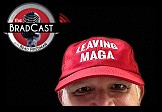 How (and Why!) to 'Extend an Olive Branch' to MAGA Family Members Over the Holidays: 'BradCast' 11/21/24
How (and Why!) to 'Extend an Olive Branch' to MAGA Family Members Over the Holidays: 'BradCast' 11/21/24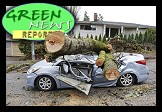 'Green News Report' 11/21/24
'Green News Report' 11/21/24
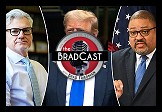 Former Federal Prosecutor: Trump Must Be Sentenced in NY Before Taking Office Again: 'BradCast' 11/20/24
Former Federal Prosecutor: Trump Must Be Sentenced in NY Before Taking Office Again: 'BradCast' 11/20/24 'Bullet Ballot' Claims, Other Arguments for Hand-Counting 2024 Battleground Votes: 'BradCast' 11/19/24
'Bullet Ballot' Claims, Other Arguments for Hand-Counting 2024 Battleground Votes: 'BradCast' 11/19/24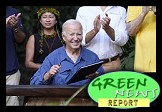 'Green News Report' 11/19/24
'Green News Report' 11/19/24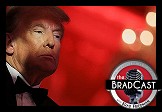 Trump Already Violating Law (He Signed!) During Transition: 'BradCast' 11/18/24
Trump Already Violating Law (He Signed!) During Transition: 'BradCast' 11/18/24 Sunday 'Into the Gaetz of Hell' Toons
Sunday 'Into the Gaetz of Hell' Toons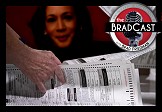 Computer Security Experts Ask Harris to Seek Hand-Counts Due to Voting System Breaches: 'BradCast' 11/14/24
Computer Security Experts Ask Harris to Seek Hand-Counts Due to Voting System Breaches: 'BradCast' 11/14/24 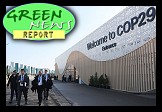 'Green News Report' 11/14/24
'Green News Report' 11/14/24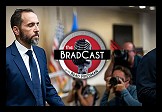 Trump Criminal Cases Fade After Election as GOP 'Does Not Believe in Rule of Law': 'BradCast' 11/13/24
Trump Criminal Cases Fade After Election as GOP 'Does Not Believe in Rule of Law': 'BradCast' 11/13/24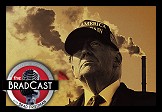 Climate Advocates Brace for Fight With Trump 2.0: 'BradCast' 11/12/24
Climate Advocates Brace for Fight With Trump 2.0: 'BradCast' 11/12/24 'Green News Report' 11/12/24
'Green News Report' 11/12/24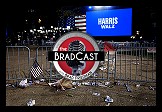 Let It All Out: 'BradCast' 11/11/24
Let It All Out: 'BradCast' 11/11/24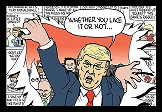 Sunday 'Like it or Not' Toons
Sunday 'Like it or Not' Toons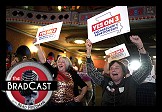 Not All Bad: Abortion Rights Won Big (Almost) Everywhere: 'BradCast' 11/7/24
Not All Bad: Abortion Rights Won Big (Almost) Everywhere: 'BradCast' 11/7/24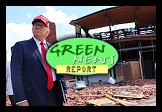 'Green News Report' 11/7/24
'Green News Report' 11/7/24 U.S. CHOOSES CONVICTED CRIMINAL, ADJUDICATED RAPIST: 'BradCast' 11/6/24
U.S. CHOOSES CONVICTED CRIMINAL, ADJUDICATED RAPIST: 'BradCast' 11/6/24 ELECTION DAY 2024: Tea Leaves, Probs for Voters, What's Next: 'BradCast' 11/5/24
ELECTION DAY 2024: Tea Leaves, Probs for Voters, What's Next: 'BradCast' 11/5/24 'Closing Arguments' for Undecideds, Third-Party Voters: 'BradCast' 11/4/24
'Closing Arguments' for Undecideds, Third-Party Voters: 'BradCast' 11/4/24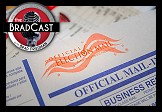 The GOP 'Voter Fraud' Before the Storm: 'BradCast' 10/31/24
The GOP 'Voter Fraud' Before the Storm: 'BradCast' 10/31/24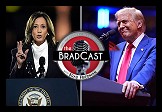 'Closing Arguments'with Digby and Driftglass: 'BradCast' 10/30/24
'Closing Arguments'with Digby and Driftglass: 'BradCast' 10/30/24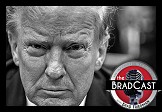 Trump Promises to be a Lawless, Authoritarian President. Believe Him: 'BradCast' 10/29/24
Trump Promises to be a Lawless, Authoritarian President. Believe Him: 'BradCast' 10/29/24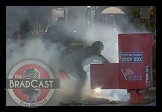 Ballots Burn, Billion-aires 'Obey in Advance', Callers Ring In: 'BradCast' 10/28/24
Ballots Burn, Billion-aires 'Obey in Advance', Callers Ring In: 'BradCast' 10/28/24 Musk's Privatized Internet Satellite System Threatens U.S. National Security
Musk's Privatized Internet Satellite System Threatens U.S. National Security
 VA GOP VOTER REG FRAUDSTER OFF HOOK
VA GOP VOTER REG FRAUDSTER OFF HOOK Criminal GOP Voter Registration Fraud Probe Expanding in VA
Criminal GOP Voter Registration Fraud Probe Expanding in VA DOJ PROBE SOUGHT AFTER VA ARREST
DOJ PROBE SOUGHT AFTER VA ARREST Arrest in VA: GOP Voter Reg Scandal Widens
Arrest in VA: GOP Voter Reg Scandal Widens ALL TOGETHER: ROVE, SPROUL, KOCHS, RNC
ALL TOGETHER: ROVE, SPROUL, KOCHS, RNC LATimes: RNC's 'Fired' Sproul Working for Repubs in 'as Many as 30 States'
LATimes: RNC's 'Fired' Sproul Working for Repubs in 'as Many as 30 States' 'Fired' Sproul Group 'Cloned', Still Working for Republicans in At Least 10 States
'Fired' Sproul Group 'Cloned', Still Working for Republicans in At Least 10 States FINALLY: FOX ON GOP REG FRAUD SCANDAL
FINALLY: FOX ON GOP REG FRAUD SCANDAL COLORADO FOLLOWS FLORIDA WITH GOP CRIMINAL INVESTIGATION
COLORADO FOLLOWS FLORIDA WITH GOP CRIMINAL INVESTIGATION CRIMINAL PROBE LAUNCHED INTO GOP VOTER REGISTRATION FRAUD SCANDAL IN FL
CRIMINAL PROBE LAUNCHED INTO GOP VOTER REGISTRATION FRAUD SCANDAL IN FL Brad Breaks PA Photo ID & GOP Registration Fraud Scandal News on Hartmann TV
Brad Breaks PA Photo ID & GOP Registration Fraud Scandal News on Hartmann TV  CAUGHT ON TAPE: COORDINATED NATIONWIDE GOP VOTER REG SCAM
CAUGHT ON TAPE: COORDINATED NATIONWIDE GOP VOTER REG SCAM CRIMINAL ELECTION FRAUD COMPLAINT FILED AGAINST GOP 'FRAUD' FIRM
CRIMINAL ELECTION FRAUD COMPLAINT FILED AGAINST GOP 'FRAUD' FIRM RICK SCOTT GETS ROLLED IN GOP REGISTRATION FRAUD SCANDAL
RICK SCOTT GETS ROLLED IN GOP REGISTRATION FRAUD SCANDAL VIDEO: Brad Breaks GOP Reg Fraud Scandal on Hartmann TV
VIDEO: Brad Breaks GOP Reg Fraud Scandal on Hartmann TV RNC FIRES NATIONAL VOTER REGISTRATION FIRM FOR FRAUD
RNC FIRES NATIONAL VOTER REGISTRATION FIRM FOR FRAUD EXCLUSIVE: Intvw w/ FL Official Who First Discovered GOP Reg Fraud
EXCLUSIVE: Intvw w/ FL Official Who First Discovered GOP Reg Fraud GOP REGISTRATION FRAUD FOUND IN FL
GOP REGISTRATION FRAUD FOUND IN FL


































